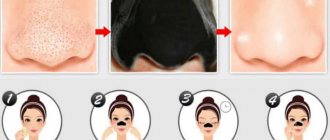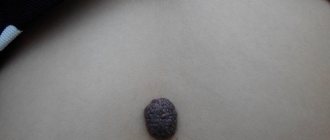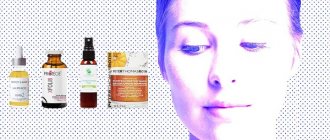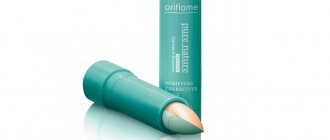Any type of rash brings discomfort to people. Pimples on tattoos look especially ugly. The appearance of a rash is influenced by many factors - both poor hygiene during printing and the characteristics of the human body. Therefore, before applying a tattoo, a professional artist must assess the condition of the skin in order to prevent unpleasant consequences.
Additional provoking factors
Of course, it’s not just problem skin that causes acne to appear after getting a tattoo; there are several factors leading to such formations. For example, quite often the reason why pimples appear on a tattoo is a common allergic reaction, in particular to the paint used for the procedure. In such cases, the pimples are small in size and whitish in color, accompanied by very intense itching.
If purulent pimples appear on the surface of the tattoo after it has been filled, this indicates that the salon does not comply with basic sterility rules. When using an untreated instrument, when carrying out a procedure without proper cleanliness, there is a high risk of contracting any infection, as a result of which the inflammatory process begins.
Getting infected
In this case, it all starts with redness and slight swelling. They are not taken seriously as these symptoms are often observed at first. If everything is normal, then swelling and redness disappear in 2-3 days if you follow basic care rules. In the case of infection, everything is much more complicated. Body temperature begins to rise, redness develops, and pronounced hyperemia of the area where the tattoo is located is observed. Subsequently, pimples filled with purulent contents form in its place. What to do in this case? There is only one option here - consult a doctor immediately. No self-medication, as the consequences can be catastrophic, because the appearance of ulcers is evidence of an intense fight of the immune system against danger. They also cannot be opened; pus can enter the bloodstream, which can lead to sepsis. Only a qualified physician can prescribe medications that are effective in this case; sometimes therapy with antibiotics or antivirals is required.
source
Tattoo covered with acne, reasons
When healing
Often the epidermis after tattooing becomes covered with pimples due to the influence of the following factors:
- Allergy. In most cases, an allergic reaction in the form of itchy rashes occurs when using low-quality paints. They contain many substances - allergens. Most often it is cobalt, mercury or chromium. The coloring agent can cause allergies even a month after applying the design to the skin.
- Infection of the epidermis. This happens when an unprofessional artist takes on the tattoo and does not sterilize the working tools well, as a result of which an infection gets into the wound and causes purulent pimples. But sometimes pimples with pus appear at home due to improper skin care during healing.
Poll: When did your acne appear? (Number of votes: 4295)
I've been suffering all my life
It's been a couple of years now
About a few months
Recently
To vote, click on the desired answer.Results
Tattoo covered with pimples
Irritation
Cause Tattoos, especially fresh ones, can be extremely sensitive to various products, materials and chemicals.
Many skin care products that are normally used without problems on your normal skin can cause adverse reactions when they come in contact with a new tattoo.
Due to the sensitivity of a new tattoo, many materials, such as various forms of clothing and bedding, can also cause irritation in the area, which can often result in pimples on the tattoo.
The appearance of such rashes and irritations can occur most often in people with delicate or thin skin.
Treatment: Stop using any strong chemicals or products on your new tattoo for at least 2 to 3 weeks until the pimples and irritation heal.
You should also prevent your tattoo from coming into contact with various objects or materials that you suspect may irritate it.
Finally, if you're tattooing in an area where it's constantly rubbing against another part of your body, this can also cause irritation, so try to avoid any skin friction at the tattoo site as much as possible.
Triderm ointment for acne after tattoos and other inflammations!
Allergy
Cause The areas of skin around a tattoo can sometimes cause allergies to many things that you never thought you were allergic to before.
Although quite rare, some people actually have allergic reactions to the various components that make up tattoo ink, and these allergies can take days and sometimes weeks to develop and disappear from the skin on the tattoo.
Treatment While mild allergic reactions in the form of small pimples on a tattoo tend to appear and then gradually go away slowly over a few days to a few weeks, more serious allergies may resolve on their own within 1 month.
We suggest you familiarize yourself with dry patches appearing on the skin
If you identify your allergies as more severe, then it is best to see a doctor who can prescribe you an allergy medication that will help your pimples go away in the shortest possible time.
Sometimes, when doctor-prescribed medications don't work and you've been diagnosed with an allergy to the ink, the only way to prevent the problem from recurring permanently is, unfortunately, to have your tattoo removed (usually with a laser).
In general, tattoo acne is caused by an infectious disease that developed either because the tattooing process was carried out in an unsanitary environment with unsterilized equipment, or due to lack of care for the tattoo during the post-tattoo period, which then allowed harmful germs and bacteria to enter. wound.
Scratching or cutting your tattoo and not cleaning it properly, swimming in dirty water are all common reasons why a fresh tattoo may develop pimples.
Infections themselves can physically manifest themselves in different ways, depending on the severity of the infection and what type of bacteria is causing it.
Vitamin injections as a way to treat acne!
A tattoo that has contact with a staph infection will develop large white brushes that are present throughout the entire area of the tattoo.
If you suspect that your tattoo may have become infected with infectious bacteria, contact your tattoo artist or doctor as soon as possible. A more rapid infection can be treated, especially since the damage from it should only be treated strictly according to the doctor's recommendations based on the type of infection and type bacteria rapidly growing on the tattoo.
Although a good moisturizer or specialized tattoo treatment lotion is great for applying ink to your skin, however, adding too much of it can cause several problems such as rashes and blemishes appearing in the area, as well as white skin surface and itchy pimples on the tattoo .
Adding more ink cleaning lotion and using new lotion over old one can also cause problems with white spots and pimples appearing over your tattoo, so be careful and monitor the artist's actions while applying the tattoo.
Tattoo treatment
Treatment for similar symptoms of inflammation on the skin after a tattoo involves applying a very thin layer of a special post-tattoo lotion to the tattoo area and cleansing the tattoo with a wet cloth and gentle baby soap 3 times a day.
Can an allergic reaction occur during or after getting a tattoo?
A tattoo is one of the most popular and widespread ways to decorate your body.
And if previously they were done exclusively by representatives of the stronger sex, today girls also do not deny themselves stylish and fashionable tattoos.
But sometimes the result does not completely meet expectations, unattractive rashes and pimples appear - in this case, an allergy to a tattoo is diagnosed.
Causes of allergies
Pimples on a tattoo not only look unsightly, but are also often accompanied by itching, burning, redness and other unpleasant symptoms that cause serious discomfort.
Most often, teenagers and people with problem skin face this problem.
If before the tattoo the epidermis was prone to frequent acne, then after the tattoo the number of acne will only increase - this is due to trauma to the skin.
But there may be other reasons why tattoos itch:
- allergic reaction to the coloring composition;
- hypersensitivity to the reducing agent;
- use of non-sterile equipment;
- improper care of tattooed skin.
Allergy to the coloring composition is one of the most common causes of rashes, which is provoked by poor-quality pigment. Also, a rash may appear as a result of individual intolerance to paint and its components.
Hypersensitivity – after a tattoo, it is recommended to use a special cream or ointment that speeds up the restoration of damaged skin. Such drugs also cause allergic reactions. In addition, they must be applied correctly - in a thin layer, since a layer that is too thick clogs the skin pores, causing acne and redness.
Non-sterile equipment - a needle, a tattoo machine and all other equipment must be thoroughly disinfected, and sanitary conditions must be maintained in the salon itself. Otherwise, the risk of infection and subsequent inflammatory process is too great.
Also, allergic rashes often appear on tattooed areas of the body, which are constantly rubbed when in contact with clothing and underwear. In order to avoid infection, you need to ensure that the tattoo site is completely at rest for 3 weeks.
Main symptoms
An allergic reaction to a tattoo is accompanied by numerous unpleasant symptoms that cause serious discomfort to the person.
- the tattoo itches, itches;
- a strong burning sensation appears at the site of the drawing;
- redness, swelling of tissues;
- staphylococcal infection is accompanied by the appearance of large whiteheads or boils;
- the appearance of red or white pimples on, under or around the tattoo.
The intensity of allergy manifestations can be different - both mild and severe. It depends on the individual characteristics of the organism.
Tattoos and psoriasis
Is it possible to get tattoos with psoriasis? This question often arises for people suffering from this disease. Psoriasis and tattoos have been studied for a long time by doctors, who came to the conclusion that drawing can be done, but only under certain conditions.
- A tattoo for psoriasis is applied exclusively during the period of remission of the disease.
- Drawing is allowed for isolated psoriatic rashes; in case of extensive lesions, it is better to avoid it.
- Doctors recommend choosing small tattoos rather than covering half the body with designs.
- Tattoos for psoriasis are allowed only on those parts of the body that have never been affected by rashes.
- Women should not experiment with tattoos during menstruation, as reduced blood clotting is observed during this period.
- If you have the flu, cold, fever, or feeling unwell, you should visit the tattoo parlor only after complete recovery.
Tattooing for psoriasis is permitted subject to certain recommendations
A tattoo for psoriasis, even applied to a clean area of skin without plaques or lesions, can cause further spread of the disease. This phenomenon is called the Febner phenomenon.
Its essence lies in the fact that the skin of a sick person is highly sensitive and reacts painfully to various chemical components, which include paint for drawings.
The body's reaction may be the appearance of new plaques on healthy areas of the skin.
Drawing is permitted only after prior consultation with a dermatologist.
Proper tattoo care
In order to avoid tattoo inflammation, it needs proper care. Immediately after applying the design, the master covers it with a special protective film. It protects inflamed skin from infections and harmful environmental influences.
After 6-8 hours, the film should be removed and the tattoo should be washed with clean water without a sponge or soap, then gently dried with a paper napkin or a sterile cotton pad.
A little moisture should be left on the skin and allowed to dry on its own, then apply a thin layer of restorative agent and cover again with a protective film.
Before applying the next layer of restorative ointment, be sure to wash off any residue from the previous application. For this purpose, use antibacterial soap or another product recommended by the tattoo artist.
Over the next 3 days, it is necessary to maintain complete sterility - under no circumstances comb or rub the inflamed area, as this can lead to infection. Otherwise, purulent pimples, redness and inflammation cannot be avoided. After 3 days, the protective film is removed.
Basic rules for preventing allergies from tattoos:
- For 2 weeks you must avoid visiting the swimming pool, bathhouse, or sauna.
- For hygienic purposes, only showers are used; hot baths are prohibited.
- It is also not recommended to engage in sports or physical labor - excessive sweating can impair skin regeneration and lead to infection.
- Stop drinking alcoholic beverages.
- During the recovery period after a tattoo, it is prohibited to sunbathe in a solarium or on the beach, swim in the sea or any other open water.
Strict adherence to these simple rules will help prevent the development of such an unpleasant problem as tattoo allergy. It is worth noting that tattooed skin requires an average of 11 to 14 days to completely heal.
Tattoo allergy treatment methods
If your tattoo itches a lot, or if you are bothered by itching or burning, you should immediately visit a dermatologist. The doctor will help determine the exact cause of hypersensitivity and select the most effective treatment tactics.
Therapy depends on the specific allergen and the severity of symptoms. In mild cases, the doctor prescribes topical antihistamines, which must be applied to the inflamed area of the skin. Most often, dermatologists recommend wiping the tattoo area with salicylic alcohol, and then applying a thin layer of Hyoxysone or Boro-plus ointment.
In more severe stages, oral and hormonal medications are used. These are Tavegil, Suprastin, Fenkarol. If the infection is severe, antibiotics may be required.
An important role in treatment is given to proper care of tattooed skin:
- pimples should never be squeezed;
- Before going outside in open clothes, the area of the design must be covered with sunscreen;
- Even with severe itching, the skin should not be scratched or rubbed;
- During hygienic procedures, it is prohibited to use washcloths or heavily lather the tattoo site;
- After bathing, the patterned skin should not be rubbed with a towel - it can only be lightly blotted and left to dry naturally.
In some cases, mild allergic reactions go away on their own without the use of medications.
If, even after a course of treatment, acne and rashes remain on the tattoo, this means that the cause of hypersensitivity lies in the coloring pigment used. In such cases, it is necessary to remove the tattoo.
What not to do if acne appears on a tattoo
It is important to remember that you should not try to independently treat pathogenic elements that appear after getting a tattoo. In this case, it is necessary to contact a dermatologist to prescribe adequate therapy.
In addition, it is strictly forbidden to try to squeeze out pimples around the tattoo and on its surface, as this can lead to serious tissue infection and many complications. For the same reason, you should not scratch pimples in an attempt to relieve the existing itching. Such actions will not only spoil the printed drawing, but can also have serious consequences for the entire body.
Also, after getting a tattoo, you should not take a bath, especially with hot water. You cannot visit saunas and baths, or swim in a pool, especially a public one. When showering, you should use mild cleansers, handling the surface of the tattoo with your hands with extreme caution. It is prohibited to rub the skin damaged by the tattoo with a washcloth or sponge.
We suggest you familiarize yourself with a mole on the palm, why it appears on the left or right palm
Preventive recommendations
To prevent the possible appearance of a rash on the embossed design, you must choose a professional tattoo parlor to perform this procedure. You can read reviews on social networks or ask friends which masters have a good reputation. Before getting a tattoo, it is important to make sure the quality of the inks used and the sterility of the instruments. Before applying a design to the client’s skin, the artist must test him for an allergic reaction. After the procedure, it is not recommended to visit the sauna, swimming pool, bathhouse or solarium, or to be exposed to sunlight for a long time. Do not touch the tattoo with your hands, rub it with a washcloth, or peel it.
Why does a tattoo itch after healing?
A significant role in this matter is played by the general condition of the body and the correct functioning of the immune system. In order for such procedures to take place without complications and the appearance of pathogenic elements on the surface of the applied patterns, it is necessary to strengthen the immune system and pay sufficient attention to one’s health. It is important to monitor your diet, consuming natural foods that provide the body with enough important elements. It is necessary to take vitamins, exercise, do not forget about walks in the fresh air and give up bad habits.
In addition, as preventive measures it is necessary to take into account a number of important points, in particular:
- Be sure to inquire about the specific tattoo parlor and artist performing the procedure. In this case, you should not trust blindly, since not every similar salon employs specialists with the required qualifications who perform high-quality work.
- Even a small tattoo poses serious stress to the skin and damages its upper layers. Therefore, people with a weakened immune system and those who have any allergies should be extremely vigilant in this matter and weigh the pros and cons in advance when making a final decision. Also in such cases, before printing the design, it is necessary to test for possible intolerance. To do this, the master applies a little paint to a small area of leather, which is supposed to be used in the process of printing the design, and then makes several small scratches on this place. The result is assessed within 30 {amp}amp;ndash, 60 minutes. If rashes or signs of inflammation appear during this time period, the paint should not be used.
- It is important to avoid swimming in the sea for the entire recovery period after getting a tattoo, and also to avoid possible salt water getting into the damaged area.
- If there are acne or an inflammatory process on the skin, it is better to avoid getting a tattoo, since such damage to the skin can significantly worsen the situation and lead to acne appearing all over the body after the tattoo.
If you have genital herpes, it is important to take into account that after applying a tattoo, in most cases a vesicular rash appears. For this reason, women are not recommended to get tattoos on the skin of the buttocks, and men {amp}amp;ndash, in the groin area.
It is also important that after such a procedure, the injured skin surface must be regularly treated with antiseptic agents, for example, regular salicylic alcohol. It is often recommended to apply ointments with an anti-inflammatory effect, but only an unqualified specialist can give such recommendations.
This is a completely normal reaction of the body to a foreign object – paint in this case.
We suggest you familiarize yourself with what causes sticking in the corners of the mouth
The second reason is the response of the immune system in the form of an allergic reaction. Experts note that most often allergies occur to red pigment, less often to brown. The body almost never rejects black, purple and blue dye, although there are exceptions. It's all about the composition of the paints used. Allergies are provoked by zinc, barium sulfide, and selenium. Titanium dioxide does not cause problems. Chromium oxide (green ink) rarely causes itching.
When an old tattoo itches after a year, but this has not happened before, then perhaps it is not an allergy, but an ultraviolet ray. If the ink contains cadmium (it is most often present in red paint, sometimes in orange and yellow), then the reaction will occur in the sun or in a tanning bed. In this case, the tattoo not only itches very much, but can even swell and turn red. The same reaction is provoked by white color if the paint is based on cadmium rather than titanium oxide.
Among the causes of itching are also called too deep penetration of ink. As a result, a scar is formed under the pattern.
Allergy
- Low quality paint. Let us immediately note that in the case of our salon, this option is completely excluded, since we use exclusively certified pigments from the world's leading brands.
- The inclination of the body of a particular client. Pigments contain natural components that are potentially allergens. This is especially true for red and yellow paints.
- Use of anesthetic creams during the session. These products are good at reducing the intensity of pain, but they often contain components that can provoke an allergic reaction. This group of reasons also includes the use of certain regenerating ointments, which can also provoke allergies.
The external manifestations of the reaction are quite standard. Firstly, small white pimples appear around the pattern and directly on its area. Secondly, tissue swelling develops, the skin area turns red, itching occurs (sometimes quite severe), and peeling occurs. If the reaction is strong, then general symptoms appear, lacrimation, cough, allergic rhinitis. First aid consists of taking antihistamines orally; in addition, you can use topical agents, including hormonal ointments. If the allergy does not go away for several days, its symptoms become more pronounced, then it is recommended to consult a doctor.
An important point is that despite the itching, the tattoo should not be scratched. Why? Mechanical impact is strictly contraindicated, since even a small force can lead to severe scratches, bleeding, pigment release, which is why the final pattern will be characterized by uneven shades or will fade greatly. If you can’t stand the itching, then wrap a piece of ice (or something very cold from the freezer) in a towel and carefully apply it to your body ornament. The cold will calm the nerve endings and relieve irritating itching.
Why do they appear after a month or even a year?
Many will confirm that acne on a tattoo can appear a month or even a year after it was done. What can cause such rashes?
- Paraphenylenediamine based paint. This substance can cause an allergic reaction, although not immediately after application, but after a month to a month and a half from the moment it comes into contact with the skin. Therefore, check with the master in advance what kind of paint he uses.
- Oily skin, which is inherited mainly, is the true cause of acne. Pores clog especially quickly with poor care, lack of washing and complete non-use of skincare products. As a rule, these pimples are not itchy.
- Adolescence is the main cause of tattoo rashes. Moreover, they can appear in the first days or after several months or even years have passed. It is for these reasons that teenagers are not recommended to perform such decorations on their bodies.
Therefore, if rashes of a hormonal, inflammatory or allergic nature appear, treatment should begin as early as possible.











